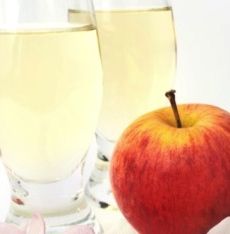
UV light shines on cheaper food safety
By By Vanessa Perkins
Food Safety Regulation Research & Development Grain & Oilseed Milling Health & Wellness AAFC agri-food bacteria Guelph
Canadian scientists are refining ultra-violet (UV) light technology to create an innovative application for liquid foods.

Agriculture and Agri-Food Canada (AAFC) scientists at the Guelph Food Research Centre in Ontario are part of the research collaboration.
The result, they say, would be more cost-effective food safety for farmers and the industry, and better flavour retention for the public.
AAFC’s research scientist Dr. Tatiana Koutchma is working with researchers at the University of Guelph and at Trojan Technologies – a leader in water treatment solutions – to advance the applications of UV light technology for use with products such as fresh apple juice and milk.
“Although UV light has been used for many years in water treatment, liquid foods produce entirely different quandaries,” explains Koutchma.
“They are denser and less transparent, which creates difficulties in light transmittance, and we are also dealing with different microorganisms, more chemical components, quality and nutrition issues.”
How it works
The collaboration however resulted in the development of UV light reactors that offer a delivery system to overcome the inability of UV rays to penetrate through liquid foods.
The system works because the microbes absorb the UV light rays, which destroy the bacteria’s DNA.
The UV light, at a wavelength of 253.7 nanometers, can effectively kill yeast, moulds, bacteria, viruses and algae.
By controlling the intensity and length of exposure time, the effect of the light on different microbes is manipulated.
Enhancing the quality of food and the safety of the food system is an AAFC science priority and the UV light irradiation system contributes to reaching this goal.
Food retains its taste, chemical preservatives are not needed and it eliminates harmful pathogens – all benefits of using UV light.
Traditionally thermal pasteurization techniques were used to kill microbes, but these methods do affect product taste, and are significantly more expensive than the UV light system.
“Ideally this process will become widespread on farms,” Koutchma reflects. “The cost of a unit is about half that of a thermal pasteurizer, it’s fast and environmentally friendly, farmers will benefit financially, but they need to be educated about the option.”
Currently continuous low-pressure mercury lamps are being used for UV light treatment, but once its validated more powerful options will exist, such as pulse and medium pressure lamps.
These would be particularly effective for more opaque and viscous liquid foods such as liquid eggs, sweeteners and tomato juices.
The lamps presently being used in the reactors function on a monochromatic spectrum, which means they emit almost all of their light at only one wavelength.
The hope is that in the near future lamps will be approved with polychromatic spectrums that would allow users to adjust the wavelength to specifically match the transparency of each individual liquid.
Print this page